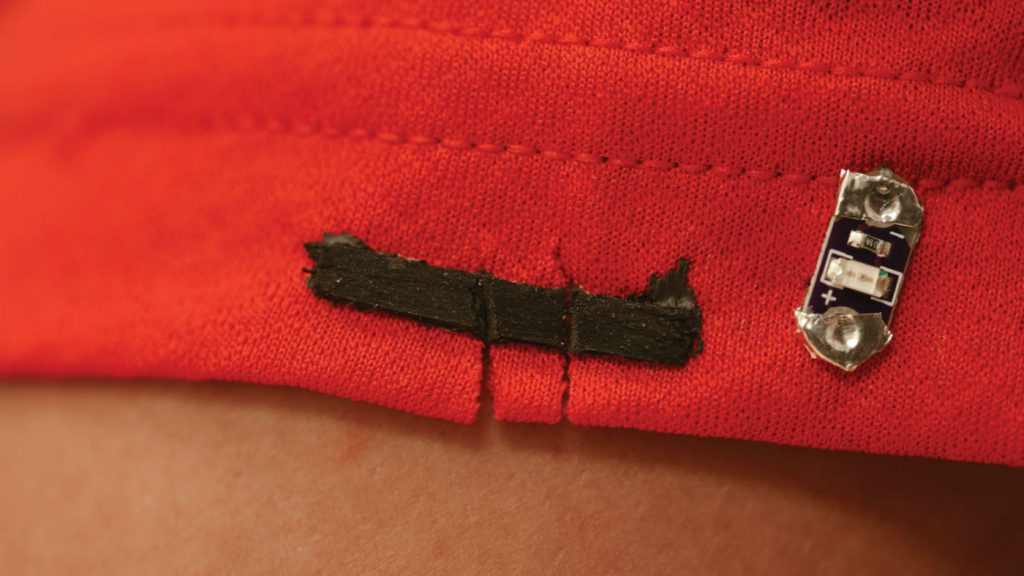In tests, textile-based circuits reconnected after being cut, paving the way for future investigations into self-healing electronics.
Batteries, electrochemical sensors, and wearable, textile-based electrical circuits of the future might be able to heal themselves, thanks to a magnetic ink developed by a team of engineers at the University of California (UC), San Diego.
The ink’s key ingredient is neodymium microparticles oriented in a certain configuration by a magnetic field. When a tear occurs, particles on both sides of the gap are magnetically attracted to one another, causing the device printed with the ink to heal itself. Tears as wide as 3 mm can be healed in this way, a record in the field of self-healing devices.
According to Joseph Wang, Director of the Centre for Wearable Sensors and Chair of the nanoengineering department at UC San Diego, the research has many implications for long-lasting printed electronic devices.
Currently, self-healing materials require an external trigger to kickstart the healing process and can take anywhere from a few minutes to a few days to work. By contrast, the system developed by Wang and his fellow researchers does not require any outside catalyst to work, and damage is repaired within about 50 milliseconds.
In tests engineers used the ink to print batteries, electrochemical sensors and wearable, textile-based electrical circuits. They then damaged these devices by cutting them and pulling them apart.
They also inflicted damage in four different places on the same device. The devices still healed themselves and recovered their function while losing a minimum amount of conductivity.
In one example, the engineers printed a self-healing circuit on the sleeve of a T-shirt, then connected it with an LED light and a coin battery. They then cut the circuit and the fabric it was printed on with a pair of scissors. The LED turned off as the connection was severed, but turned back on as the two sides of the circuit came together again and healed themselves, restoring conductivity.



